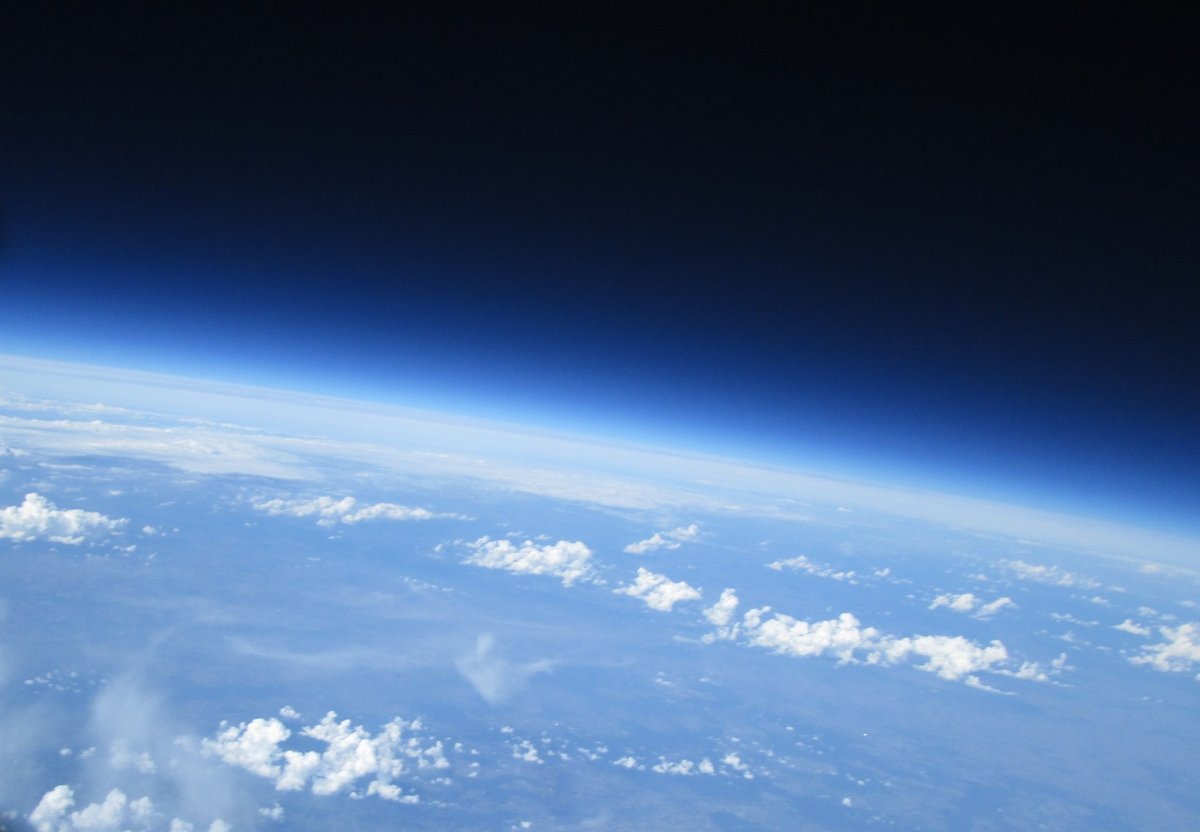Hi, I'm Carolin from @HdAstro and I'm taking part in the #GlobalScienceShow. In this thread we wil track weather balloons into the stratosphere at altitudes up to 40 km!
Follow along @GlobalSciShow and check out @mpoessel who is up next
#Pint20 #GlaSciFest
Follow along @GlobalSciShow and check out @mpoessel who is up next
#Pint20 #GlaSciFest
From time to time you can see very bright, moving star-like objects in the sky, even during daytime. This image is from April this year and shows one of them together with planet venus, the evening star, for comparison
If you look closer, e.g. with binoculars or a telescope, you can see that they are large balloons filled with hydrogen or helium, floating very high up in the sky and carrying something too small to recognise
They are weather balloons, and this is their cargo: so-called radiosondes equipped with sensors to measure air pressure, temperature and relative humidity. They also have a GPS receiver to determine position, height, wind Speed and direction. Sometimes they also measure ozone
Weather balloons with radiosondes are launched by meteorological organisations, research institutes or the military worldwide on a regular basis, often several times per day. They help us to understand the state of Earth's upper atmosphere and support weather forecasting.
The radiosondes transmit their measurements at radio frequencies between 400 MHz and 406 MHz, and everyone can receive their signal. Radio amateurs track them systematically, and on websites like https://radiosondy.info you can follow them even if you don't have the equipment
With decreasing air pressure, the gas filling of the balloon expands when the balloon rises higher and higher, until at some point the rubber or latex membrane bursts. This usually happens at heights between 28 and 35 km, but depends on the initial amount of gas in the balloon
After the burst, the radiosonde goes down on a small parachute to be retrieved by radiosonde hunters (like me...). They are single-use and the organisations which start the sondes usually don't want them back, although some of them pay a finder's fee if you return them
Since you can receive their GPS signal, finding the radiosondes is a little bit like geocaching. Sometimes they cannot be retrieved, e.g. because they end up in the ocean, or in the middle of a motorway. Hunters are used to fetch them from trees.
Fancy to start your own weather balloon and make measurements in the stratosphere, or even take pictures like the one above? (Meteorological radiosondes don't have cameras) Please adhere to the rules in your country!
You usually need a permit, and starting them too close to airports is forbidden. Additionally you need a radio license if your sonde should have a radio sender to track them, but you can also use GPS trackers that send their location via SMS

 Read on Twitter
Read on Twitter









